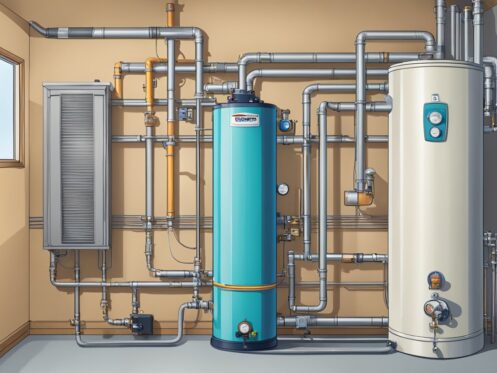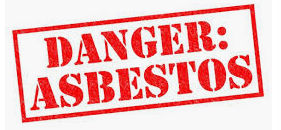Understanding how long it takes for your water heater to heat up can save you time and frustration. The heating time varies based on the type of water heater you have. Electric water heaters typically take between 60 to 80 minutes to provide hot water, while propane models can heat water in about 30 to 40 minutes.
If you’re using a tankless water heater, you’ll have instant access to hot water as it heats water on demand. Knowing these times can help you plan your showers, laundry, and dishwashing more efficiently. At Splash Plumbing, we handle all types of water heaters and can ensure your system operates efficiently.
Regular maintenance can also improve your water heater’s performance. If you’re ever unsure about your heater’s efficiency or its heating time, it’s wise to consult a professional. Trust Splash Plumbing to help you with all your water heater needs and ensure that you never have to wait too long for hot water again.
Understanding Water Heater Types
Water heaters come in several types, each designed to meet different needs and preferences. Choosing the right one depends on your household’s demands, energy efficiency goals, and available space. Below are the main types of water heaters you should consider.
Conventional Tank Water Heaters
Conventional tank water heaters are the most common type found in homes. These units store a large volume of hot water, typically between 30 to 80 gallons, kept at a constant temperature.
Key Features:
- Heating Element: Uses either gas or electricity to heat water.
- Recovery Time: Generally takes 30 to 70 minutes to fully heat, depending on size and fuel type.
- Efficiency: Less energy-efficient when compared to tankless options as they maintain water temperature continuously.
When you have a high hot water demand, a conventional tank water heater may be the right choice. If you need professional assistance with installation or maintenance, Splash Plumbing can help you make an informed decision regarding your options.
Tankless Water Heaters
Tankless water heaters, also known as on-demand water heaters, deliver hot water only as needed. This design eliminates the need for storage tanks, making them a space-saving option.
Key Features:
- Hot Water Supply: Provides unlimited hot water, as long as the demand does not exceed the unit’s capacity.
- Heating Time: Heats water almost instantly; typically, you’ll see hot water within a few seconds of turning on the tap.
- Energy Efficiency: Uses less energy since they heat water only when required, potentially lowering utility bills.
If you prioritize energy efficiency and space, a tankless water heater could be your best option.
Heat Pump Water Heaters
Heat pump water heaters use electricity to move heat from the air or ground to heat water. They are highly energy-efficient and suitable for moderate climates.
Key Features:
- Energy Use: Can be two to three times more efficient than conventional electric water heaters.
- Installation Requirements: Requires thermal conditions; best installed in spaces with steady temperatures, like basements.
- Recovery Time: Generally longer recovery times than tank heaters, which can affect simultaneous hot water demands.
For optimal performance, consult with professionals like Splash Plumbing to determine if a heat pump water heater suits your home’s unique requirements.
Solar Water Heaters
Solar water heaters harness sunlight to heat water and are an eco-friendly option. They typically comprise solar panels and a storage tank.
Key Features:
- Energy Source: Uses renewable energy, which can significantly reduce utility bills.
- Performance Factors: Efficiency can be affected by geographic location, daylight availability, and temperature.
- Installation Cost: Higher initial costs but can lead to substantial long-term savings.
Solar options are an excellent choice for environmentally conscious homeowners. Consider partnering with a skilled plumber for installation to maximize the system’s efficiency.
Factors Influencing Heating Time
Several factors can significantly affect how long it takes for your water heater to heat up. Understanding these will help you manage your expectations and optimize your system’s performance.
Water Heater Size and Capacity
The size of your water heater plays a crucial role in heating time. Larger tanks hold more water, meaning they take longer to heat. For instance, an average 80-gallon gas tank may take around 60 to 70 minutes to heat up. In contrast, the same capacity for electric tanks could approach 2 hours. The capacity you choose should align with your household’s hot water demand to ensure adequate supply without excessive waiting times.
Initial Water Temperature
The temperature of the incoming water also impacts heating duration. If your municipal supply is particularly cold—around 50°F or lower—your system must work harder to raise that water to the desired temperature. Conversely, during warmer months when incoming water is about 70°F, the heating process will be quicker. This variation can affect heating times by as much as 30 to 90 minutes.
Energy Source and Efficiency
The energy source of your water heater—gas or electric—can greatly influence efficiency and recovery rate. Gas water heaters generally provide faster heating because they can produce higher BTUs (British Thermal Units) than electric models. This can reduce heating time to approximately 30-40 minutes. Additionally, the efficiency rating of your unit affects performance; more efficient models will heat water faster and consume less energy. Selecting the right fuel type and maintaining your heater can optimize heating times and reduce costs.
For reliable assistance with your water heater needs, Splash Plumbing is here to help. Our experienced professionals can guide you through the options best suited to your home.
Installation and Maintenance Considerations
Proper installation and regular maintenance of your water heater are crucial for ensuring efficient operation and minimizing heating time. Understanding these aspects will help you maximize performance and longevity.
Proper Installation for Optimal Performance
To achieve the best results from your water heater, ensure it is installed by a qualified technician. This guarantees that all connections are secure and compliant with local codes. Moreover, the water heater should be placed in a well-ventilated area to prevent overheating.
Insulating the hot water pipes can significantly improve efficiency. Insulation helps to retain heat and reduces the time it takes for hot water to reach your taps. Take care to avoid placing the unit in a cramped location, which can hinder airflow and efficiency.
If you’ve opted for a gas water heater, ensure that it’s vented properly to prevent gas buildup and facilitate efficient combustion. Any installation issue can lead to maintenance challenges down the line, so accurate setup is essential.
Routine Maintenance to Reduce Heat-Up Time
Routine maintenance is vital for prolonging the life of your water heater and keeping it functioning optimally. Sediment buildup in the tank can hinder heating efficiency and increase heat-up time. To mitigate this, flush your water heater at least once a year.
Regularly check the anode rod as well. If it’s corroded, replace it promptly to prevent damaging the tank. Also, examine the temperature and pressure relief valve to ensure it operates correctly. Any malfunction could lead to serious safety issues.
Investing in annual maintenance from a qualified service provider, like Splash Plumbing, can help you identify potential issues before they escalate, ensuring your water heater runs efficiently and effectively.
Adjusting Settings for Desired Hot Water
Optimizing your hot water settings ensures efficient heating and comfort. Proper adjustments can significantly affect your water heater’s performance and energy use.
Thermostat Settings and Temperature Adjustment
Adjusting the thermostat setting of your water heater is key to achieving your desired water temperature. Typically, the ideal temperature is around 120°F to balance comfort and safety. To make adjustments, locate the thermostat on the unit, which is often a simple knob.
After turning the knob, wait for two to three minutes to check if the temperature meets your family’s needs. If it’s too high or too low, recalibrate accordingly. Regular checks and adjustments can lead to better energy efficiency and cost savings. If adjusting your settings feels overwhelming, consulting a professional, like Splash Plumbing, can ensure your system operates optimally while adhering to safety standards.
The Role of Insulation in Maintaining Heat
Insulation plays a crucial role in maintaining your hot water temperature. If your water heater is poorly insulated, heat loss can occur, leading to longer heating times and increased energy bills. Insulation jackets can be added to older units to enhance heat retention.
Additionally, pipes should also be insulated, especially those that transport hot water. Insulating hot water pipes helps reduce heat loss, ensuring that water remains hot longer. Proper insulation not only keeps energy costs down but also improves your heating system’s efficiency. For effective solutions tailored to your home’s needs, consider reaching out to Splash Plumbing for expert advice and professional installation.
Enhancing Hot Water Delivery
Optimizing hot water delivery involves improving efficiency and reducing wait times for hot water access. Two effective methods include implementing circulation systems and insulating pipes. These strategies can lead to faster access to hot water, minimizing delays and enhancing comfort.
Circulation Systems and Their Impact
Installing a recirculating pump can significantly enhance your hot water delivery system. This system works by keeping hot water circulating through the pipes, which means that when you turn on the tap, hot water is readily available.
You can choose between a dedicated or a demand circulation system. Dedicated systems continuously circulate hot water in a loop, while demand systems only activate when needed.
Factors like pipe distance from the water heater impact wait times. For instance, in homes with larger distances to faucets, a circulation system can cut down the wait significantly, ensuring quicker access to hot water.
Insulate Pipes for Consistent Temperatures
Insulating your hot water pipes plays a crucial role in maintaining water temperature. By wrapping pipes in insulating material, you minimize heat loss, ensuring water remains hot as it travels from the heater to the faucet.
This insulation can prevent energy loss and reduce heating costs. It is particularly beneficial for long pipe runs where heat can escape quickly.
Consider using foam pipe insulation, which is easy to install and effective. Additionally, ensuring that your water heater and pipes are adequately insulated improves overall system efficiency. Consult Splash Plumbing for expert advice on insulation solutions tailored to your home’s layout.
When to Call a Professional
If your water heater takes longer than the typical heating time, it may indicate a problem. You should consider calling a professional if:
- Old Unit: Your water heater is over ten years old and showing signs of wear.
- Inconsistent Heating: The water temperature fluctuates unexpectedly.
- Leaks or Puddles: Water pooling around the unit can be a sign of internal failure.
In these situations, contacting a technician from Splash Plumbing can prevent further damage and keep your home safe. A trained professional can identify issues that you might not notice, like sediment buildup or faulty components.
Additionally, if you hear unusual noises such as rumbling or banging, it’s wise to seek help. These sounds can indicate mineral deposits in the tank or more serious internal malfunctions.
Don’t ignore warning signs. Consistent problems can lead to larger, more expensive repairs. Reach out to Splash Plumbing for expert assistance tailored to your specific situation.
Ultimately, knowing when to call a technician will save you stress and money. Trust professionals to ensure your water heater operates efficiently and safely.
Frequently Asked Questions
Understanding the heating times and recovery periods of water heaters can help you effectively manage your hot water needs. The following questions address common concerns about water heater performance and what to expect in various situations.
What is the typical recovery time for a hot water heater after a shower?
Typically, a hot water heater takes about 30 to 120 minutes to recover after being depleted. For a conventional tank water heater, this is influenced by its size and heating method for optimal recovery.
How much time does a new water heater need to heat up for the first time following installation?
After installation, a new water heater may need around 30 minutes to 2 hours to heat water to the desired temperature. The specific time depends on the tank size and the heating source used.
What’s the average heating duration for an electric water heater to reach the desired temperature?
On average, an electric water heater takes approximately 60 to 80 minutes to heat water. An 80-gallon electric model might require closer to 2 hours to reach full temperature.
What is the heating time difference between a gas and an electric water heater?
Gas water heaters usually heat water faster than electric models. While electric units can take up to 2 hours for larger tanks, gas units can often reach desired temperatures in about 30 minutes.
How long should I wait for a hot water heater to refill and heat up after being drained?
After draining, it may take between 30 minutes to 2 hours for a water heater to refill and heat up, depending on the tank capacity and heating method.
What factors influence the time it takes for a 50-gallon water heater to fully heat the water?
Several factors affect heating time, including the power of the heating element, the initial water temperature, and the energy source. For a 50-gallon tank, an electric heater may take longer compared to a gas model due to supply differences.
If you face recurring issues with your water heater, consider reaching out to Splash Plumbing for reliable water heater repair and maintenance services.












